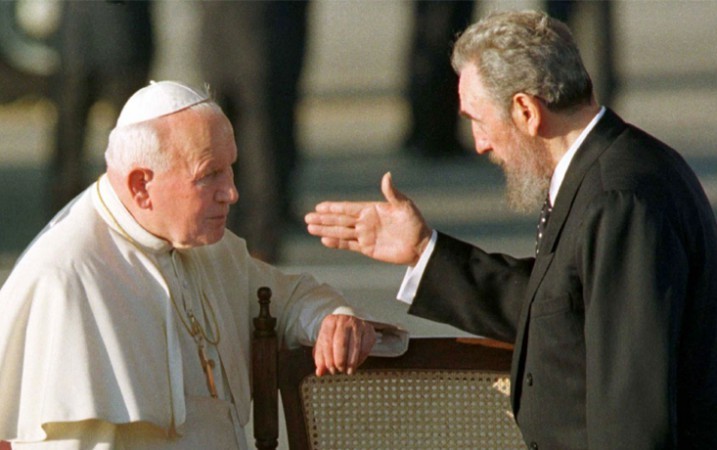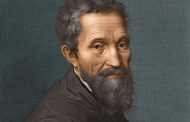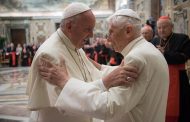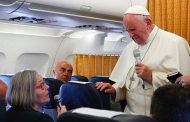The normalization of relations between the United States and Cuba may be primarily a turning point for those two nations, but it also represents a victory for a Vatican policy of détente that reaches back at least to the papacy of John Paul II.
Cuba is a historically Catholic country, where 60 percent of the population is still estimated to be Catholic, and where the Church is also an important provider of social services and humanitarian relief.
Under the Fidel Castro regime, Catholicism suffered from various forms of persecution and harassment. In Castro’s early years, he reportedly jailed, killed, or exiled 3,500 Catholic priests and nuns. In light of Pope Francis’ nationality, it’s worth noting that the first Cuban Cardinal, Manuel Arteaga y Betancourt, was forced to take refuge from Castro’s forces in the Argentinian embassy in Havana from 1961 to 1962.
Later on, violent attacks subsided, but the Catholic Church remained barred from operating religious schools and from formally teaching religion.
Lay faithful have faced discrimination in the workplace based on overt expressions of religious identity, for instance, and Church officials are still awaiting a breakthrough on the return of Church properties expropriated by the regime 40 years ago.
Facing those realities, the Vatican’s line over the past 40 years has favored engagement and the gradual reinsertion of Cuba into the community of nations, on the theory that a Cuba moving toward the center would also be friendlier to religion.
Pope John Paul II was famously anti-Communist, so when he visited Cuba in 1998, many expected a repeat of the sort of clash familiar from his role in inspiring the Solidarity movement in Poland in the 1970s and 1980s.
The visit was largely obscured in the American media by the Monica Lewinsky scandal that broke out in Washington, DC, at the same time. In the end, however, John Paul mostly chose outreach over confrontation, appearing in public with Castro on several occasions and projecting images of friendly dialogue.
John Paul did call on the Cuban authorities to provide greater freedom of expression and association, but in general treated Castro as a legitimate head of state rather than a pariah. In return, Castro made a point of wearing a suit rather than combat fatigues for his encounters with the pope, and shortly after John Paul II left, Castro restored Christmas as a national holiday.
The pope sent Castro a note of thanks, irritating many anti-Communist hawks on Cuba.
Five years later, the Vatican’s top missionary official at the time, Italian Cardinal Crescenzio Sepe, traveled to Cuba to celebrate the reopening of a convent for the Brigittine order of Catholic nuns.
Sepe came in for criticism from Catholic conservatives who denounced the gesture as nothing more than a photo-op for the Castro regime, but Vatican officials insisted the trip was part of a long-range strategy for steering Cuba down a more moderate path.
That policy of détente extended into the Benedict XVI years.
When Benedict visited Cuba in 2012, he pointedly declined to meet a delegation from the “Ladies in White,” one of the most prominent anti-Castro opposition groups in the country. He also denounced the US trade embargo on Cuba, saying it “unfairly burdened” the Cuban people.
The German pontiff was so deferential that US Sen. Marco Rubio of Florida, a Cuban-American and a Catholic, expressed fear that the Catholic hierarchy had “negotiated themselves a space of operation” in Cuba, “in exchange for looking the other way” regarding the regime’s crimes.
The National Review, a conservative journal usually supportive of the papacy, posted threads criticizing Benedict and the local Church for not publicly embracing Cuba’s dissidents, and one Miami Herald columnist wrote, “The Cuban Church hierarchy will go down in history as siding with the oppressors rather than the oppressed.”
None of that, however, deterred Vatican diplomats who were determined to keep open the lines of communication with Cuba, especially as the country prepared for a post-Castro future.
Pope Francis met Berta Sole, the leader of Cuba’s “Ladies in White,” at the end of a general audience in March 2013 and gave the group his blessing. At the time, hardline anti-Castro forces hoped it might signal a change in direction under history’s first Latin American pope.
Instead, Francis largely continued the official policy of staying in conversation with Cuba, an approach that helped position the Vatican to be a trusted broker in the back-and-forth between Washington and Havana.
The pope wrote a personal letter to Obama this fall and a separate letter to Raul Castro, an overture that reportedly helped break the ice between the two leaders.
Depending on where Cuba goes from here on religious freedom, time will tell whether the Vatican’s determination to keep the conversation open comes to look like sage statecraft or appeasement.
For now, Francis can bask in Obama’s tribute for moral leadership that encouraged officials on both sides to see “the world as it should be.”





